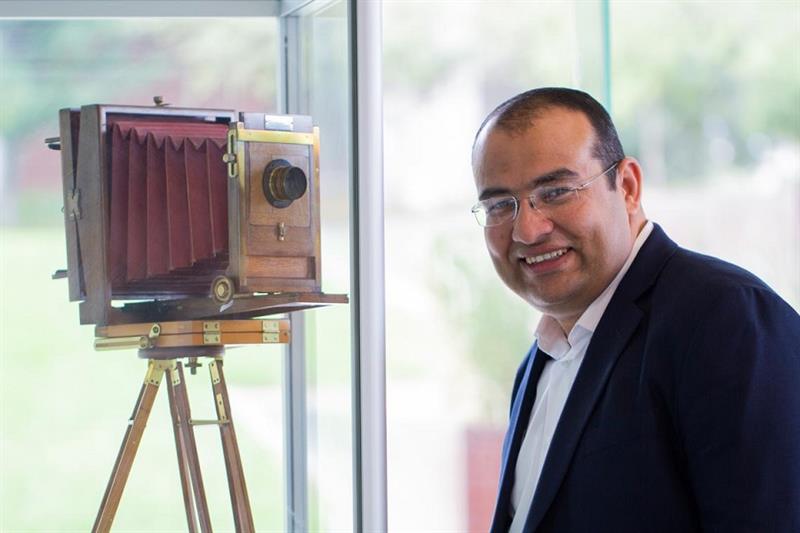
Physicist Mohammed Hassan. University of Arizona
The attosecond is a billionth of a billionth of a second, which means that one attosecond is to a second what a second is to more than 31 billion years. Pulses with attosecond resolution can enable scientists to control the movement of the extremely fast electrons.
The attosecond is also equal to 1/1000 of a femtosecond. Late Egyptian Nobel Laureate Ahmed Zewail was able to use lasers to watch chemical reactions that take place in a matter of femtoseconds. However, electrons move at higher speeds.
In remarks to Scientific American magazine, Hassan, an assistant professor of physics and optical science at the University of Arizona, said controlling the motion of electrons inside atoms can enable the conversion of glass, which is a very poor conductor of electricity, into a conductive material by using laser beams.
“This means we will be able to produce photoelectrons through which we can control the electric current and achieve a major breakthrough in the manufacture of electronic devices that work with lasers,” Hassan said.
He added that electronic devices that currently operate at gigahertz speeds will be able to work at petahertz speeds, which is a million times faster.
Measuring the reflected laser beams from glass also paves the way for transmitting information at laser speed across long distances, Hassan said.
“This opens the door, for example, for the use of this technology in space communications between Earth and any spacecraft on Mars and perhaps at very distant space depths,” he added to the magazine.
Nature Photonics published an article for Hassan and his team in December, providing in-depth scientific explanation of the attosecond electron motion control in insulators.
In March 2020, the Arizona physicist was awarded $1.1 million after being the first to photograph electrons in motion.
Hassan also managed to generate the first optical attosecond pulse, which was been recognized by Guinness World Records as the shortest visible light pulse.
Hassan, who was born in Fayoum governorate, graduated from Cairo University, and obtained his PhD from the Max Planck Institute for Quantum Optics in Germany.
Short link: